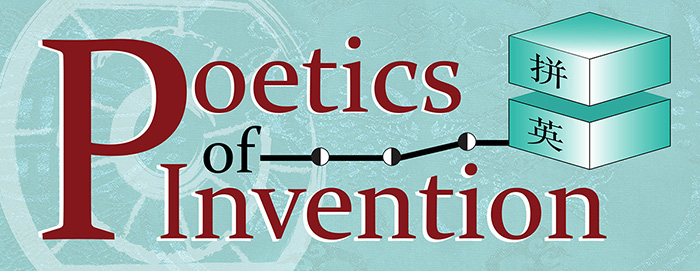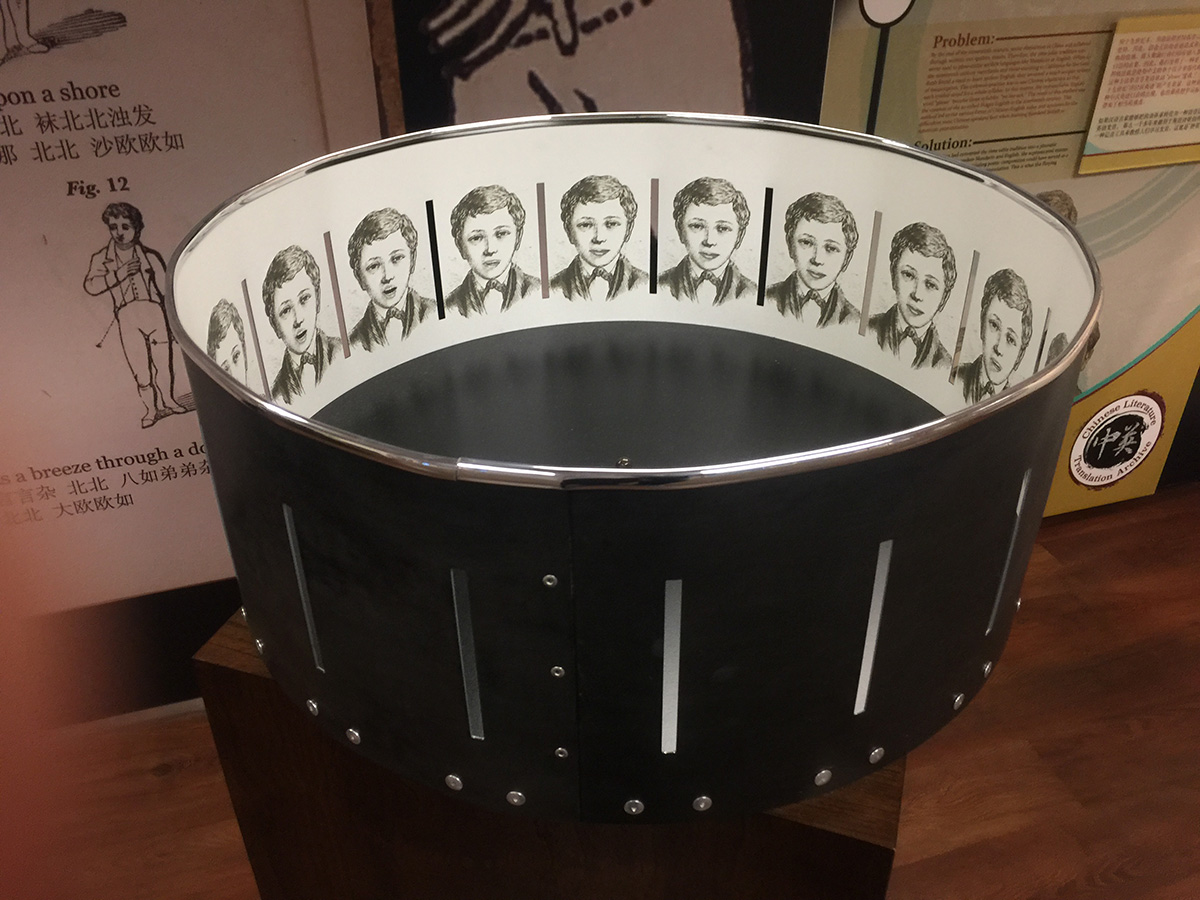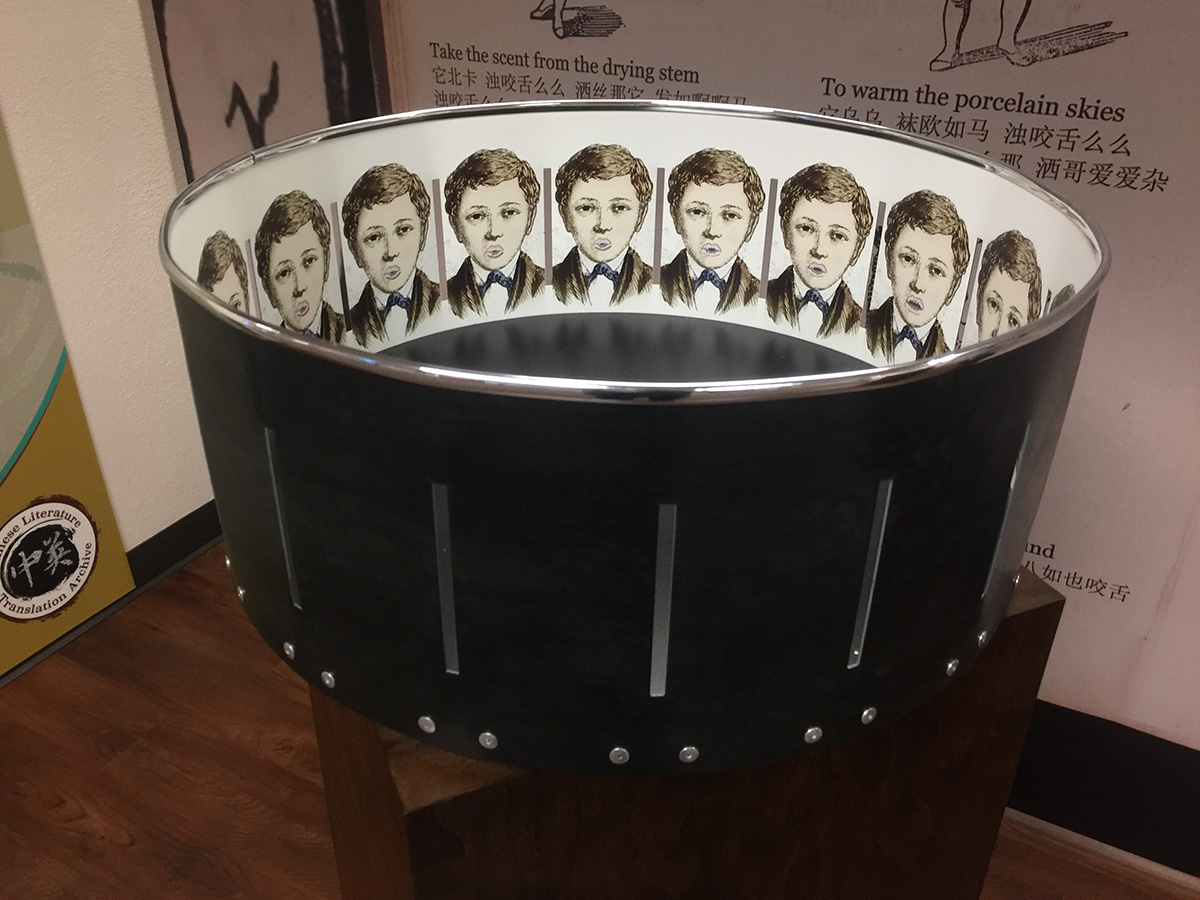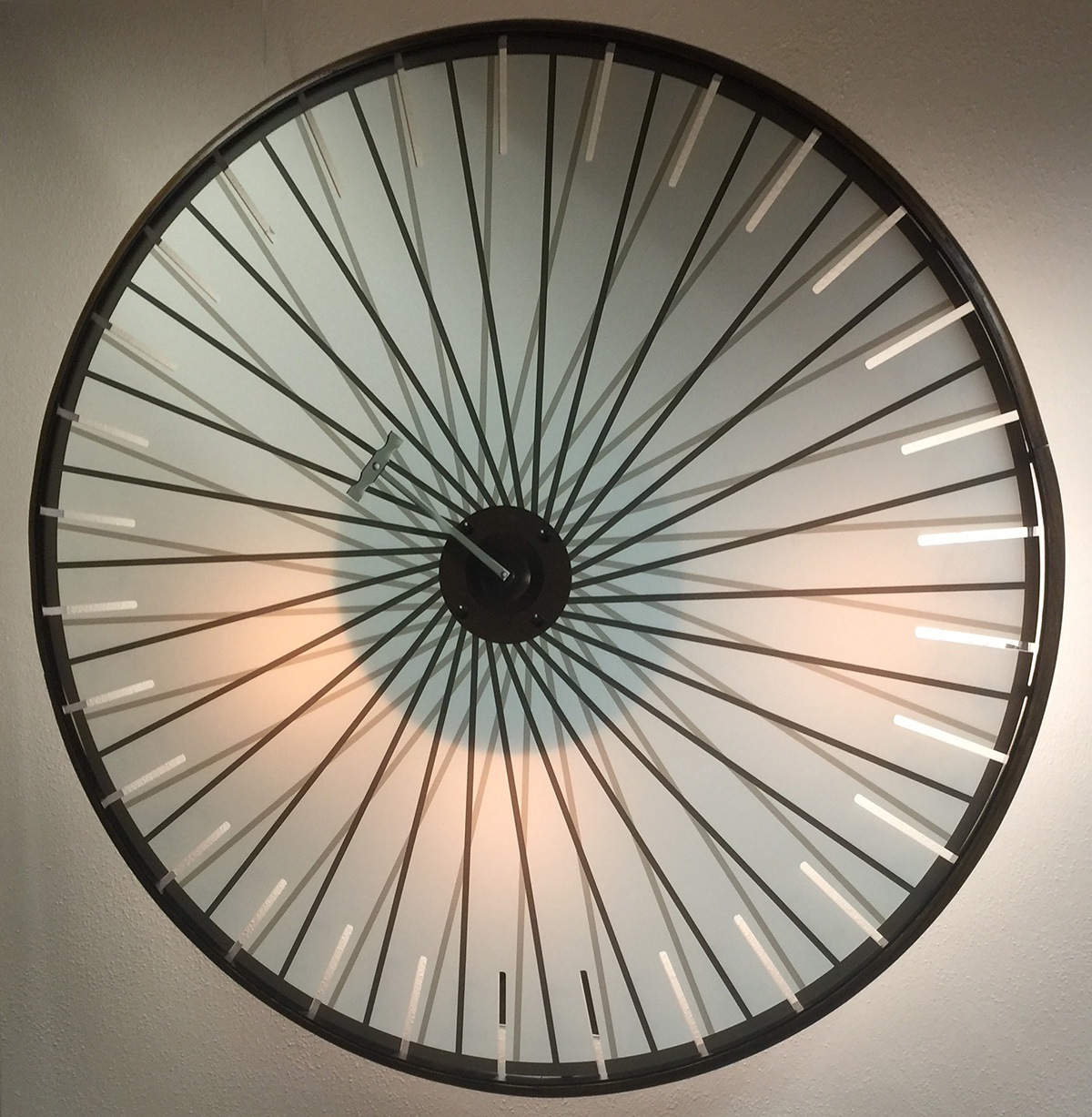Feature Type: Zoetrope
Tabletop Zoetrope
The English vowels /ee/ as in “he” could have been taught by employing Zoetropes to animate the standard mouth positions associated with this vowel. Zoetropes could have been used in China during this period to suggest a link between Victorian high-technology (animation) and language standardization.
Tabletop Zoetrope
English vowels (in this case /oo/ as in “hoot” and /ah/ as in /hot/ can be described in terms of mouth position (rounded/un-rounded etc). Pinying could have used the rime-table tradition to teach these vowels by employing the Chinese characters /乌/ and /啊/ to represent the same vowel shapes. While zoetropes such as these could be used to show similarity between standardized English and Chinese vowels.
Large Zoetrope
Large zoetropes were first created using another new technology--the bicycle. A rotating bicycle wheel could provide the speed required to create the allusion of movement for the animation.






